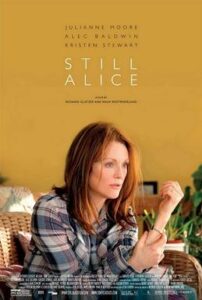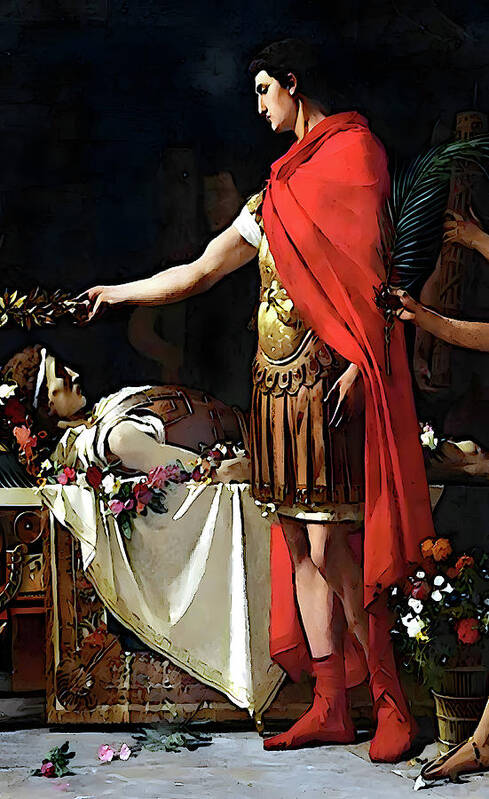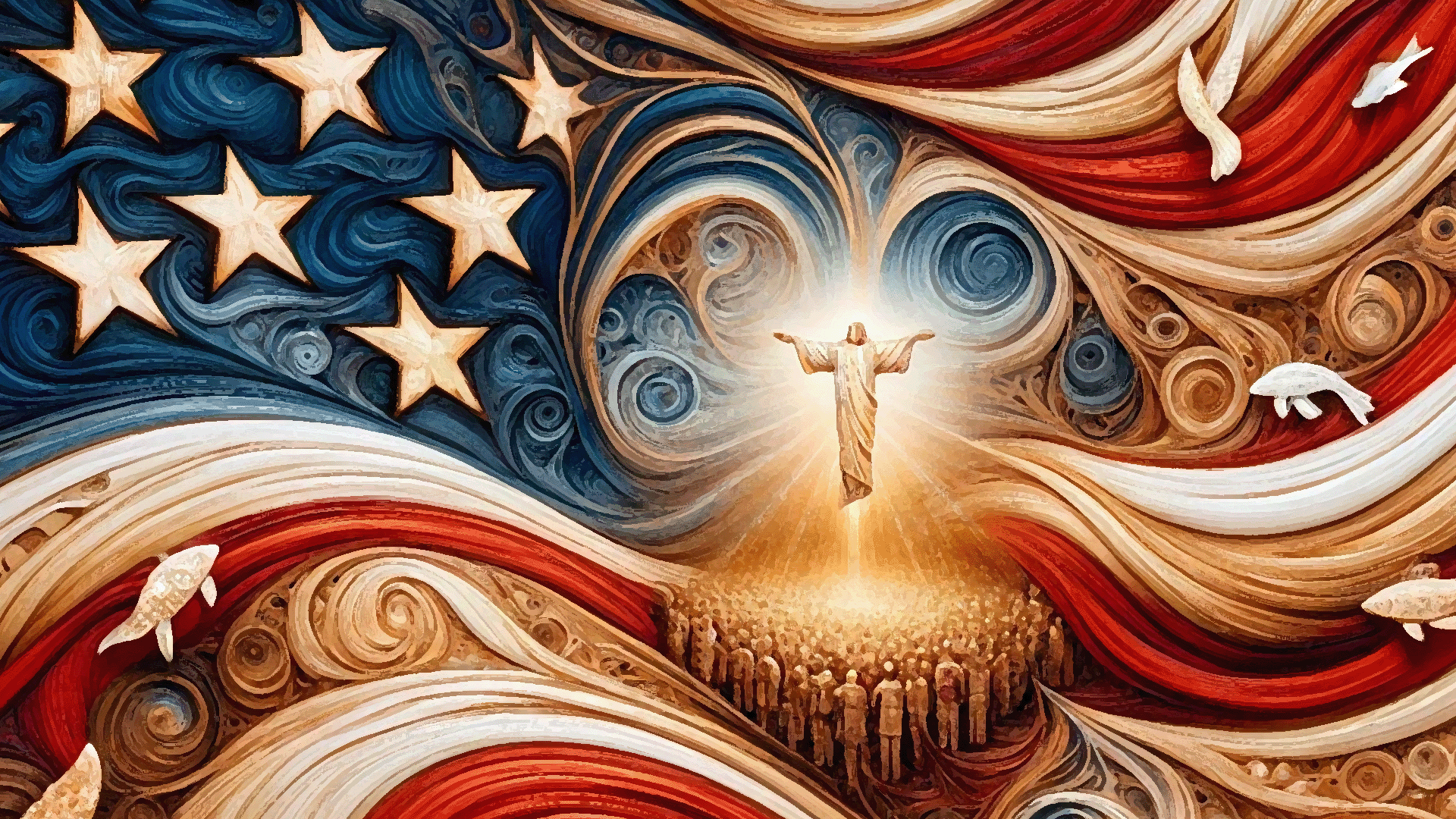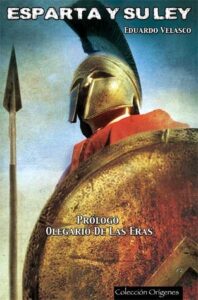‘How fortunate for governments that
the people they administer don´t think’.
—Hitler
‘How fortunate for governments that
the people they administer don´t think’.
—Hitler
by Gaedhal
 I watched the 2014 film, Still Alice, yesterday.
I watched the 2014 film, Still Alice, yesterday.
One of the things that I liked about it was its treatment of the stages of grief. The denial stage is well treated. Alec Baldwin just openly denies that Alice has Alzheimer’s. Alice is quick, almost immediate, to acknowledge verbally that she has Alzheimer’s, but she still lives in denial. She still believes that she can go running, go on holiday, lecture Linguistics at college etc. And also, we kinda get a subtle hint from a neurologist who looks uncannily like Lawrence Krauss that Alice was late in seeking a diagnosis. It was only really when Alice could no longer disguise her memory problems that she sought a diagnosis.
Alice has familial early-onset Alzheimer’s. This is caused by a mutation in the genome.
I remember, in the grand old days of yore, I used to install television satellite dishes with my father. The set-top box, for to decode and unencrypt the digital television signal had a forward error correction rate. The set top box had an algorithm that could correct some errors received from the Satellite. Do not ask me about the engineering wizardry behind this. To me, digital satellite television is a technology sufficiently advanced to be indistinguishable from magic.
However, where is the forward error correction in our genome? Unintelligent design strikes again. This is why, in my view, Paley’s watchmaker argument fails in our day. In Paley’s day, technology was still, very much, in a crude and primitive state. However, in our day, the process of technological manufacturing is so refined that the organs—organum in Latin means: ‘tool’ or ‘instrument’—produced by nature are wholly deficient when compared to the tools, and instruments produced by humans. We humans can contrive forward error correction, whereas biology and nature, thus far, cannot.
And this, incidentally, is why I am pro-abortion.
One of Alice’s children has the gene for early-onset Alzheimers. She swiftly conceives twins by IVF. The embryos in the petri dish are screened for the familial-Alzheimer’s disease, and the embryos containing this gene are destroyed, and only the healthy embryos are implanted. In essence, a woman’s uterus does the same thing: it screens sperm and embryos for nasty genetic material, and if it discovers any such nasty genetic material, then it either kills the sperm, or it kills the embryo or foetus. Thus, naturally, a woman’s uterus has its own contraception and abortion mechanisms. Contraception and abortion is merely the augmentation of a natural process. And if you believe in God, then God ultimately designed these contraceptive and abortifacient faculties that a woman contains in her uterus.
Evolution explains this. Evolution wants a woman to give birth to offspring that will reach adulthood, such that they too will either give birth to or sire offspring. Evolution does not want a woman to either accept defective sperm or to incubate defective embryos. Thus, evolutionarily speaking, the contraceptive and abortifacient faculties that a woman already possesses makes sense. And if you want to defy Ockham’s razor and add a god to the mix, then go ahead. If you do so, then contraception and abortion become divine.
Anyhow, another pro-death position that I hold is euthanasia. There is a scene where Alice tries to commit suicide by ingesting an overdose of Rohypnol. I, of course, was cheering her on, because Alzheimer’s is a fate worse than death. At this point of the film, she was only ½ Alice, by my reckoning. Unfortunately, Consuela from Family Guy, her nurse and housekeeper, gives her a jump-scare, knocking the tablets out of her hand, dooming her to become a human vegetable.
If I ever get diagnosed with dementia, I will book a trip to Switzerland and ingest some Pentobarbital at a Dignitas facility. However, such a service, ideally, ought to be available in Ireland. Evangelical Protestantism prevents euthanasia from being a reality in the North—although it is becoming a reality on the British mainland—and the vestiges of a Catholic theocracy prevent euthanasia from becoming a reality in the South. Again, why I am an antitheist. On the Island of Ireland, Roman Catholicism and Calvinism—the two biggest brands of Christianity, on this island—still have way, way, way too much power. There are no good secular arguments against euthanasia, just as there are no good secular arguments against abortion. Which is why the atheist British mainland is far in advance of Ireland, North and South on these issues.
My grandmother was not still my grandmother after about a year and a half of dementia. However, she lived on as a human potted plant—a mockery of her former form—for about two years after. I was glad, for her sake, when she died. In the words of Saint Thomas More, in his Utopia she outlived herself. Annie Bessant quotes the Utopia in her essay in favour of euthanasia.
______ 卐 ______
Editor’s 2 ¢
Since I studied the fraudulent profession called psychiatry in-depth, I realised, in reviewing its 19th-century origins, that psychiatrists were simply pathologizing behaviour such as suicide, a ‘sin’ considered lèse majesté divine, dogmatically declaring it to be a disease of unknown biomedical aetiology (and the same with the other diagnostic categories ‘of unknown aetiology’!).
Like me, Benjamin has spotted a tremendous error in the racial right, for example, in the comments sections where hundreds of commenters opine in The Unz Review. None of them seem to notice the pseudo-scientificity of psychiatry. Neochristianity, as we understand it on this site, means that the axiological tail of Christian morality persists, foolishly, in today’s secular world. What Gaedhal mentions above is only one example.
I would add that the negrolatry (BLM, mixed couples, etc.) that so afflicts today’s mad West is another example of Christian morality exponentially exacerbated in the secular world (from this site’s seminal essay, ‘The Red Giant’, a Swede noted that secularism exacerbates Christian morality big time).
White nationalists shouldn’t ignore us. They should realise that rather than our paradigm (CQ) competing with theirs (JQ), our POV expands the latter as with the iceberg metaphor. They only see the iceberg’s tip but we know that the Jewish Problem is supported by the huge mass of Christian ethics that lies underneath. Dr Robert Morgan agrees with us in the post from a couple of days ago.
Why did some of the brightest brains in history prefer to be alone? Why do outstanding intellectuals stay away from social life? For those who possess great intelligence is seclusion a privilege or a curse? These issues were addressed by Arthur Schopenhauer, one of the 19th century’s most gloomy and visionary philosophers who was anything but benevolent towards society.
Schopenhauer believed that the world was full with shallow individuals with small-minded goals and engrossed in pointless discussions and amusements. A natural talent had to distance himself from this unimpressive performance. According to his own words, all great spirits end up alone. Was he correct or is this disdain for social life only a sign of a lack of interpersonal connections? Think about notable individuals who were renowned for their brilliance and their seclusion. Are they merely misunderstood and destined to roam alone, or are they examples of intellects that are superior to common souls?
Let’s examine Schopenhauer’s theories. As the world around him moves forward, picture a genius who is totally absorbed in his ideas and lost in intricate theories. He wonders about the future of humanity [e.g., will Parrish-like Nordids survive?—Ed.]. While everyone else is preoccupied with discussing the weather, he inevitably isolates himself as he attempts to comprehend the nature of being [e.g., the whys of the fair race’s darkest hour—Ed.]. Others engage in frivolous conversations.
According to Schopenhauer this distance is an unavoidable result of intellectual superiority rather than a decision. He believed that the more a person stood out for his intelligence, the harder it was for him to find peers on the same level, with whom he could share his thoughts and emotions. Schopenhauer believes that a natural barrier between the individual and society is created by superior intelligence, because those who have a broader perspective on the world have very different interests and concerns than the majority.
Only in solitude can a man be himself since he can only be genuinely free when he is alone. He cannot enjoy freedom if he does not love solitude. Schopenhauer saw isolation as both a burden and a necessary haven. According to him, social norms and the petty interests of the majority frequently suffocate intelligence. He noted that people with higher levels of intelligence frequently felt uncomfortable interacting with the general public because they were able to see beyond the obvious and comprehend truths that were not readily apparent to them.
Friedrich Nietzsche was another thinker who cherished isolation. But seclusion comes at a cost: a strong sensation of alienation might result from deviating from societal norms. Schopenhauer was aware of this and thought that, although it could be freeing for brilliant thinkers, solitude could also be a weight because they have a deeper perspective on the world than most of us will ever be able to understand. So many of the greatest thinkers in history experience periods of worry and sadness. This is not because they were weak. The crucial question that follows is whether loneliness is a good thing or a bad thing.
For Schopenhauer, it was obvious great thinkers welcome their solitude as a blessing. Their greatest achievements might be possible if they are isolated, enjoy silence, and are free from social mediocrity.
 Like the British and the French, the German government is bent on replacing Aryans with Orcs. To do so it has to suppress freedom of expression in an overwhelming manner, as even the media controlled by Jewry is beginning to recognise (see e.g., the 60 Minutes program, ‘Policing the internet in Germany’). It’s funny to compare this with Vance’s recent speech in Munich!
Like the British and the French, the German government is bent on replacing Aryans with Orcs. To do so it has to suppress freedom of expression in an overwhelming manner, as even the media controlled by Jewry is beginning to recognise (see e.g., the 60 Minutes program, ‘Policing the internet in Germany’). It’s funny to compare this with Vance’s recent speech in Munich!
…MacDonald, I maintain that Jewish propaganda is far from the only force shaping the culture of the West. I’m not even convinced that ethnic rivalry between whites and Jews plays much of a role at all. What MacDonald casts as Jewish evolutionary strategy due to its destructive effects on the white race is better seen as the destructive effects of technological “progress” in the socio-political sphere; the transformation of America from a republic to an empire.
For reasons we’ve previously discussed, for example, I see lots of technical reasons for the re-writing of America’s immigration policy in 1965, MacDonald’s signature issue. For one thing, it was part of America’s push towards empire, an attempt to incorporate the entire western hemisphere into its body politic. The Cold War with the Soviet Union demanded that America prove its anti-racist bona fides, and letting in more brown people was one way to do it; it extended the country’s global influence and let it enrich itself at the same time. The Jews may have thought it helped them too, and maybe it did, but if so, they were allowed to do it by whites because it also helped grow American power. True, it can be seen as bad for the white race, but Empire has always been bad for racial purity, and was so even in the time of Caesar Augustus or Alexander.

Caesar Augustus visits the tomb of Alexander the Great.
Whites have always been unfazed by this drawback and grow their empires anyway. Likewise with MacDonald’s other issues. Franz Boas’ anti-racist message was accepted by whites because it better accorded with their Christianity-derived wishful thinking about race than a Darwinian view. The Jew-backed push for nigger “civil rights” and racial equality was for something that white America had already granted in principle after the Civil War and so could not credibly be opposed. All governments try to minimize their internal conflicts, so although it was bad for white racial purity, it was a necessary thing from the point of view of the state for purely technical reasons.
On the other side of the coin, where Jews have opposed the popular will, as they did twice in the election of Trump over the virulent objections of the Jewish media, Jewish Hollywood, the largely Jewish legal system, and heavily Jewish academia, they have been defeated, and all their propaganda came to naught.
Greetings to All!
by Martin Kerr
Let us start off this update with some good news: This has been a strong week for the NEW ORDER on social media, which is now one of the important battlefronts on which our struggle is being waged.
Specifically, we have had two very succesful posts within the space of four days on Gab. Together, these two posts combined have had 50,588 views (!), along with 820 likes, and 336 reposts (including quotes). These numbers will likely go up a little bit over the coming week. Those reading this update who have engaged in “real world” activism will realize that the amount of time, effort and expense it would take to distribute 50K leaflets, stickers or message cards would be immense. A single social media post (or two of them together) is not going to change the world, but spreading our message to tens of thousands of our White brothers and sisters is certainly a step in the right direction!
You may view the two posts here:
New Mini-Leaflet Campaign Gaining Some Traction
Starting in October, the Central Office mailed out packets of our new mini-leaflets to key activists for public distribution. So far, we have received word of distributions in eight states, namely Arkansas, Florida (multiple locations), Kentucky, Maryland, Nebraska, New York, Virginia (multiple locations), and Wisconsin. I suspect that that activists in other states have conducted additional distributions, but have not reported them to the Central Office. In one location – Brooklyn, NY – our good work was mentioned in the media. See:
These mini-leaflets are designed primarily to drive traffic to our website. We are not trying to “convert” normies into Hitlerists with a single leaflet, but rather to attract people who are already sympathetic (or merely curious) to our website, where serious education can take place. Mini-leaflets have been used to enhance the content of books in libraries, bookstores, used bookstores and newstands. Some have been place on bulletin boards or left at the coffee stations in convenience stores. Other comrades, using spray adhesive, glue and/or packing tape, have used the mini-leaflets as stickers.
Anyone wanting a packet of these cheery little fliers to distribute in their area should contact the Central Office, either by email or postal mail. To see what some of our designs are, check out this post by Racial Consciousness on Gab, here:
March 9th – Day of Action
March 9, 2025/JdF 135, will be the 107th anniversary of the birth of George Lincoln Rockwell, founder of post-War American National Socialism. This would be an excellent occasion for comrades nationwide to spread the Good Word of Adolf Hitler far and wide, operating either in small groups (preferred) or as lone wolf activists. Whether it is by the distribution of printed material or in some other manner, seize this opportunity to join with other National Socialists in bringing our message to our racial brothers and sisters.
If you choose to participate, be sure to report your activities – whether large or small – to the NEW ORDER Central office.
In Memoriam
We are sorry to report the passing of our longtime comrade, Douglas Winkleman. We are informed that he died from complications due to cancer on Dec. 12, 2023. He was 66. Comrade Winkleman is survived by his wife, five children and seven grandchildren. In the 1970s and 1980s, he was an officer in the Los Angeles Unit of the National Socialist White People’s Party. He also served for a year at party National Headquarters in Arlington, Va., as Corresponding Secretary and aide to Commander Matt Koehl. A full obituary of Doug will be forthcoming.
Webste News
We are still in recovery mode from the deplatfoming of our website in August. We are retaining counsel to get our previous URL restored to us. In the meantime, our new platform (https://theneworder.net/) is up and running. This past week we were able to get our Leaflet Library page back up, with the new URL on all leaflets. See:
You may use this resource to download leaflets for reproduction and distribution.
The two most-recent posts on the website are:
Matt Koehl’s classic 1967 essay, “Adolf Hitler: German Nationalist or Aryan Racialist?” This is the first time that we have had this important treatise on a NEW ORDER website or blog. Read at: LINK
A new short article by Martin Kerr, entitled, “An Historical Footnote: The Meeting between George Lincoln Rockwell and Otto Strasser.” See: LINK
Please excuse the tardiness of this update. There is a lot going on with the NEW ORDER right now, and we are operating with a very small staff that stretches us to the limit. We ask for your patience.
Stay in touch!
Heil Hitler!
Martin Kerr
Chief of Staff
NEW ORDER
A couple of days ago, in the comments section, I mentioned the documentary End of the Road, which I watched again yesterday. In 2014 Tim Delmastro, one of the documentary’s producers—an artist—kindly sent me the DVD as a gift when the documentary could only be seen by buyers.
Not long ago I said that Mein Kampf and the book by Bernal Díaz, one of the conquerors of the Aztec Empire, were marred by the prolixity of that pair of books and that ideally they should be abridged.
A fundamental part of literary art is to write as compactly, clearly and didactically as possible; and I believe that both Mein Kampf and The True History of the Conquest of New Spain, a first-person narrative written in 1568 should, under the supervision of an accomplished artist, be abridged.
Well: in less than an hour End of the Road presents the POV of the Austrian school economists in such a way that a layman can perfectly understand it! Economics is not an esoteric subject. It is a relatively simple subject that only becomes convoluted if one only has, as a source of information, conventional economists (i.e., those who fail to predict any currency crash).
The End of the Road interviewees are the economic equivalent of Jared Taylor’s race realism compared to the pseudoscientific anthropology taught in Western universities. In fact, in 2025 the ‘Big Boys’ of the financial world have already begun to buy tons of gold. Too bad I, in the Third World, lack the resources to get at least couple of coins but those who, like the racialists of the First World, are presumed to be dissidents of the system should start to do so.
Leo Tolstoy, undoubtedly the ablest modern expounder of primitive Christliness, in a much-translated volume entitled Work While Ye Have Light writes: ‘Our Faith tells us that bliss is to be found, not in resistance, but in submission; not in riches, but in giving everything away; we have not quite succeeded in casting off every habit of violence and property.’
To the most inept understanding, could any proposition be placed in a clearer light? Is it not as simple as ‘rolling off a log,’ that the individual attempting to become a true and honest Christian must become like unto a tame sheep?
What a sublime Ideal! How heroic! The bliss of a sheep! How superlatively delightful! How divinely glorious! And a Jew as the Good Shepherd, who leadeth his lambs ‘to green pastures, and quiet resting places, the pleasant waters by.’ For two thousand years, or so, His fleecy flocks have been fattening themselves up with commendable diligence—for the shearing-shed and the butchers-block.
Let any nation throw away all ‘habits of violence,’ and before long it must cease to exist as a nation. It will be laid under tribute—it will become a province, a satrapy. It will be taxed and looted in a thousand different ways. Let any man abandon all property, also all overt resistance to aggression and behold, the first sun will scarcely have sunk in the west before he is a bondservant, a tributary, a beggar, or—a corpse.
Property is necessary to the complete and free development of personality, and therefore human animals should somehow obtain a full and fair proportion thereof at any cost—or perish in the attempt; for he who cannot possess himself of property is much better buried out of sight. Our cities are honeycombed with treasure caverns, heaped up with gold, title deeds, silver, and instruments of credit: our valleys and our mountains are bubbling with wealth untold; and yet, poor miserable ‘servants of Christ’ pass idly by. Men, they call themselves! I call them—castrates.
If Tolstoy’s obsequious principles are derived from the Sermon on the Mount, then who can deny but that the Sermon on the Mount is a sermon unto decay and slavery? If they are derived from the Golden Rule and if the Golden Rule is the word of God, then can it be doubted that the word of God is the word of Fraud. There is far too much of this ghastly ‘goodness’ in the nation, far and away too much. It is time men who can think began to emancipate themselves, and consider the fact that: Morals, laws and decalogues were made by liars, thieves and rogues.
Liberty is honestly definable, as a state of complete bodily and mental self-mastership (which included the possession of property; also defensive weapons) and thorough-going Independence from all official coercion or restraint. Liberty in the conventional sense is a miserable Lie.
To be independent is synonymous with proprietorship. To be property-less, and unarmed, is the condition of actual dependence and servitude. Unarmed citizens are always enslaved citizens, always. Liberty without Property is a myth, a nursery tale, believable only by babbling babies and ‘fools in the forest’—fools in the city also. ‘Liberty regulated by Law’ is, in practice, tyranny of the darkest and foulest description; because so impersonal. There are numerous worthy, reasonable, and practical methods whereby individual tyrants may be removed; but a tyranny ‘regulated by Law’ is only removable by one method—the sword in the hands of men who are not afraid to use it, or to have it used against them: that is to say—the Sword in the hands of the Strongest.
During the whole course of human history, there is not upon record, one authentic instance wherein a subjugated people has ever regained property-holding Liberty, without first butchering its tyrants (or its tyrants’ armed slaves in battle) thereafter confiscating to its use, the lands and realized property that previously had been in the possession of its defeated foes and masters.
This statement is made with cool deliberation and aforethought. Let it be disproved by any one creditable example to the contrary, and the Author is prepared to forfeit 50,000 ounces of pure gold and enough ‘dimes and dollars’ to erect in Chicago, a bronze statue of ‘Our Blest Redeemer’ (crown of thorns and all) 100 cubits higher than the Masonic Temple. This offer is strictly bonafide and shall remain open till 1906, so that philosophers, editors, statesmen, divines (and other accomplished liars) may have enough time to blind themselves, wading through National Archives, and the putrid rubbish heaps that men call Public Libraries.
by Gaedhal
Metaphysically, I disbelieve in classically theistic gods, and revealed gods. I believe that most religions cause more harm than good most of the time. However, that said, I prefer ‘secular Catholic’ as an identifier rather than ‘atheist’. However, we in Europe have come to terms with things like secularism—which is not the same thing, at all, as state atheism—and the social safety net.
America, though, seems to be regressing into a hypercapitalist Christian Nationalist dystopia, though.
For billionaires, like Elon Musk, a third-world country is actually what they want. Third world countries are poor, religious and uneducated. In a third-world country, Churches and business are rich… it is only the majority of the country that is starving. Beside every third-world slum, there is a resplendent cathedral and Bishop’s palace. Paying attention to the first few weeks of Trump’s presidency, he seems to be doing everything in his wit and ken to turn America into a 3rd-world Christian theocracy.

An abstract wood burning art representation of a political rally, deeply infused with Christian symbolism.
Placing Pentecostalist lunatic Paula White as head of a White House “Faith Office” is exactly what we would expect, if Trump and Elon wanted to turn America into a 3rd-world Christian theocracy. And, to reiterate: billionaires, oligarchs and conmen—such as Trump and Elon—love 3rd-World Christian theocracies, because in such a polity, they are completely unaccountable.
______ 卐 ______
Editor’s 2 ¢
Neither Trump nor his followers (or the Woke Democrats!) will get away with it. Finally, after much prediction from Austrian economists, the Big Boys—the Central Banks—are starting to buy tons of gold. Translated this panic into our language, they are dumping dollars. The day when the dollar collapses and is no longer the international reserve currency is no longer so far away…
The fact that Donald Trump was present yesterday in a stadium watching the American football final, or that Emmanuel Macron was present at the final of the last FIFA World Cup—both football finals featuring teams with a huge number of blacks—, is a symptom that we are suffering the darkest hour for the white race (which the title of this site designates with the euphemism ‘the West’).
 What a difference from those times when only pure Aryans attended the Olympics! This was before a Christian emperor banned the Olympic games (‘resumed’, centuries later in the Christian Era, admitting people of colour). Those who haven’t read our abridged translation of Eduardo Velasco’s essay on Sparta should read it now.
What a difference from those times when only pure Aryans attended the Olympics! This was before a Christian emperor banned the Olympic games (‘resumed’, centuries later in the Christian Era, admitting people of colour). Those who haven’t read our abridged translation of Eduardo Velasco’s essay on Sparta should read it now.